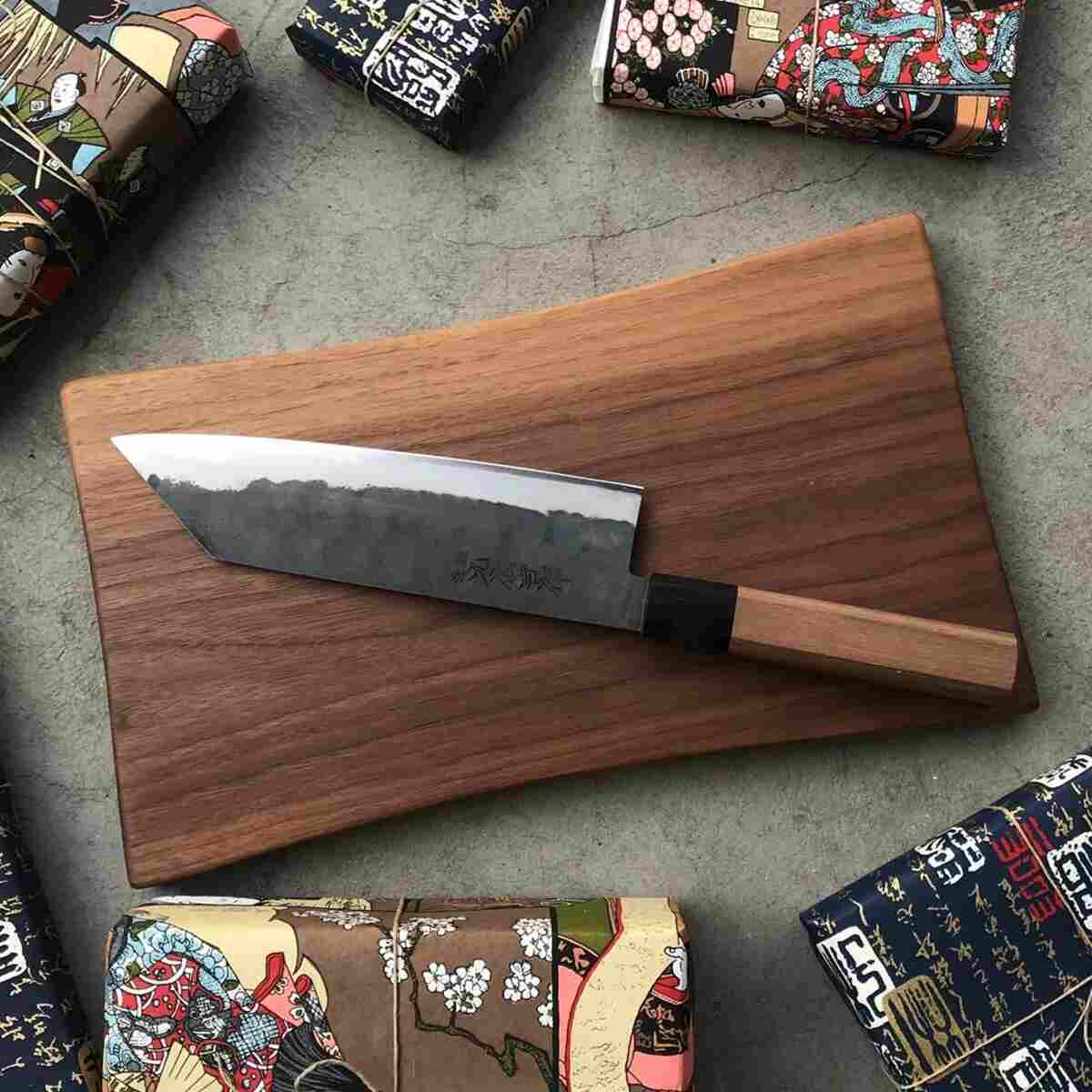History Carved in Steel: Evolution of Japanese Chef Knives
Japanese chef knives, often celebrated as the pinnacle of culinary craftsmanship, have carved a niche for themselves on the global stage. Renowned for their precision, balance, and artistry, these knives are not just tools but a testament to Japan’s centuries-old tradition of meticulous craftsmanship. Their sharpness, unparalleled durability, and the sheer elegance with which they glide through ingredients have made them a coveted possession for chefs and culinary enthusiasts worldwide.
Within this illustrious category, the Bunka knives shine with their distinct charm. Bunka, literally translating to ‘culture’ in Japanese, embodies a perfect blend of tradition and modernity. With its recognizable reverse-tanto tip, these multi-purpose Japanese chef knives represent Japan’s rich culinary heritage adapting to contemporary needs. Serving both home and professional kitchens, Bunka knives stand as an epitome of versatility, uniting the age-old knife-making techniques with the demands of modern-day cooking. Its significance in the vast array of Japanese chef knives is akin to a bridge between the past and the present, echoing the timeless art of Japanese cooking.
What makes Japanese chef knives so unique?
When one delves into Japanese chef knives, the first thing that captures attention is the exquisite craftsmanship that goes into every blade. With their unparalleled skill and dedication, Japanese knife makers forge these tools with a precision that has been honed over centuries. Every knife is a product of countless hours of labor, often involving several artisans, each specializing in a different aspect of the knife-making process. The materials used, primarily high-carbon steel, are meticulously chosen to ensure longevity, sharpness, and resistance to wear.
The blade designs of Japanese chef knives further set them apart. Unlike the uniform format found in many Western counterparts, Japanese knives come in myriad shapes, each catering to a specific culinary task. The thin, sharp edges are designed for clean cuts, reducing damage to the food’s cell structure and preserving its original flavor and texture. Furthermore, the blade’s unique angles and curves, such as the reverse-tanto tip of the Bunka knives, not only offer aesthetic appeal but also provide specific advantages, like precision in delicate tasks or efficient slicing. These distinct features come together to offer an unparalleled cutting experience, making Japanese chef knives a prized asset in kitchens worldwide.
What do you need to know about Bunka knives?

The Bunka knives stand out as a unique blend of artistry and function within the grand tapestry of Japanese chef knives. At first glance, its profile captivates; the blade features a bold, distinctive silhouette designed to serve many purposes in both professional and home kitchens. Central to its design is the reverse tanto or K-tip. This pointed tip, reminiscent of the legendary Japanese katana, is not just for aesthetics; it serves a critical function. The pronounced K-tip excels in tasks that require precision. Whether piercing through a piece of meat or executing delicate work like julienne cuts or finely dicing garlic, the Bunka knife makes these tasks seem almost effortless. This design facet adds versatility and specificity, allowing chefs to work with a level of detail that is not easily achieved with other knives.
But beyond its physical attributes, the Bunka knife is deeply symbolic. The very name “bunka” translates to “culture” in Japanese. This choice of terminology is no accident. It signifies the deep-rooted connection between Japan’s rich culinary heritage and its evolving culinary arts, a delicate balance between age-old traditions and contemporary innovations. The Bunka knives, therefore, are not just tools but a testament to Japan’s unwavering commitment to culinary excellence, blending the past and the present, tradition, and progress. Using a Bunka knife doesn’t just engage in cooking; they participate in a time-honored cultural ritual.
What are the advantages of using Bunka?
In the bustling kitchens of the 21st century, where efficiency and versatility are paramount, the Bunka knives emerge as a prized tool. Its broad-ranging application offers professional and home enthusiast chefs an edge (literally and figuratively) in their culinary endeavors. Firstly, the Bunka is the epitome of versatility. While rooted in traditional Japanese craftsmanship, its design is tailored for many tasks. Whether it’s slicing through thick cuts of meat, dicing hard vegetables, or making intricate cuts in fish for sushi, the Bunka handles it all gracefully. This means fewer knife changes, saving valuable time and ensuring consistent results.
Furthermore, where the Bunka knives genuinely shine is in tasks requiring precision. The reverse tanto or K-tip is a game-changer. Its pronounced tip allows for meticulous jobs such as piercing, removing seeds from chilies, or even intricate garnishing. Such tasks, which might require specialized knives or be cumbersome with a standard chef’s knife, become a breeze with the Bunka.
The Bunka knife, with its fusion of age-old design and contemporary needs, offers modern kitchens an unmatched blend of adaptability and precision. It is a testament to the timeless relevance of Japanese chef knife craftsmanship in today’s culinary landscape.
Discover the magic of Japanese craftsmanship.
Delving into Japanese chef knives, particularly the Bunka, is not just about appreciating a tool; it’s about immersing oneself in a legacy. Each knife carries centuries of Japanese tradition, innovation, and meticulous craftsmanship. The Bunka, with its distinctive design and versatile functionality, is a testament to the Japanese culinary art’s adaptability and timelessness. By understanding this rich history, one gains respect for the tool and elevates one’s culinary experience.
Dive deeper into the world of Japanese culinary mastery. Order a Bunka knife today and become a part of this enduring legacy.
Read also: How Many Teaspoons Are in 3 4 of a Cup?

